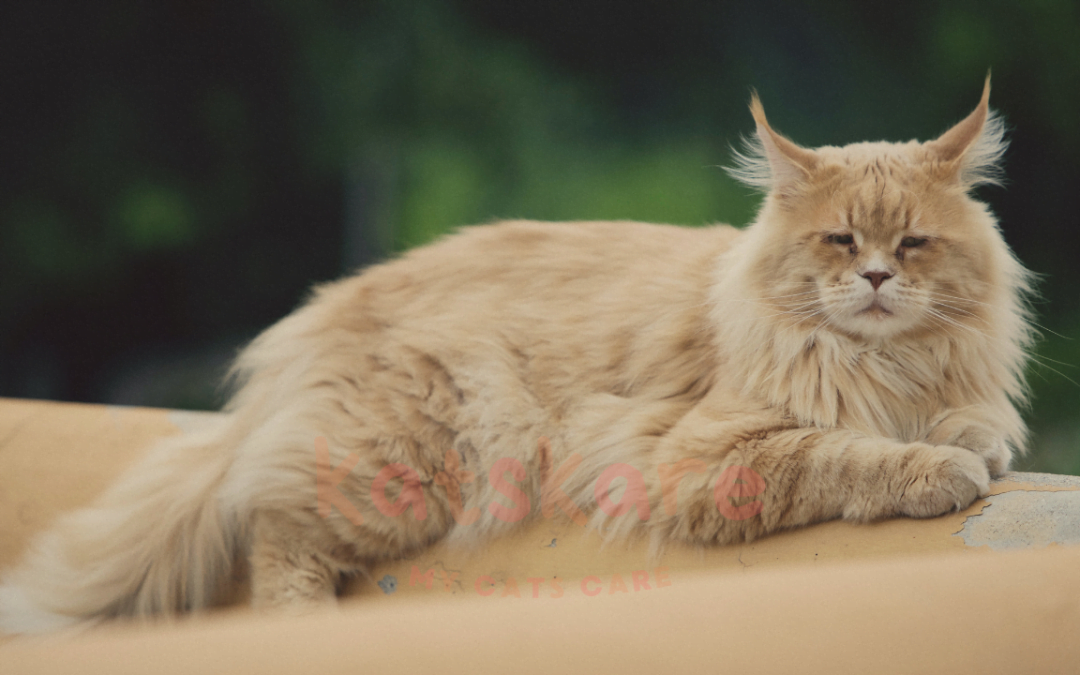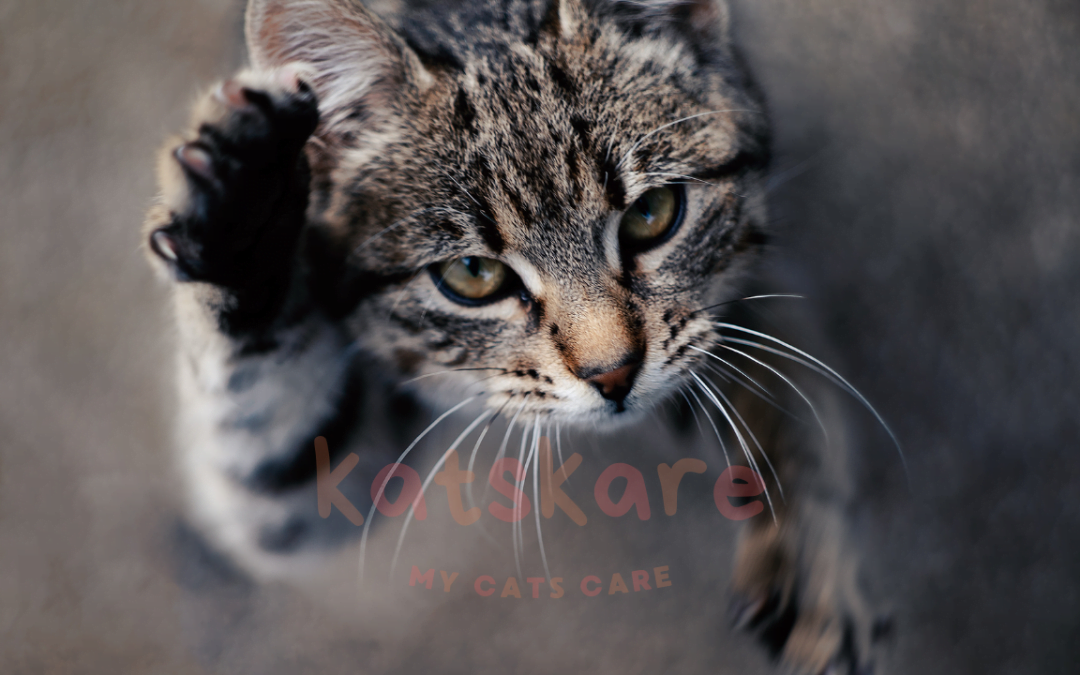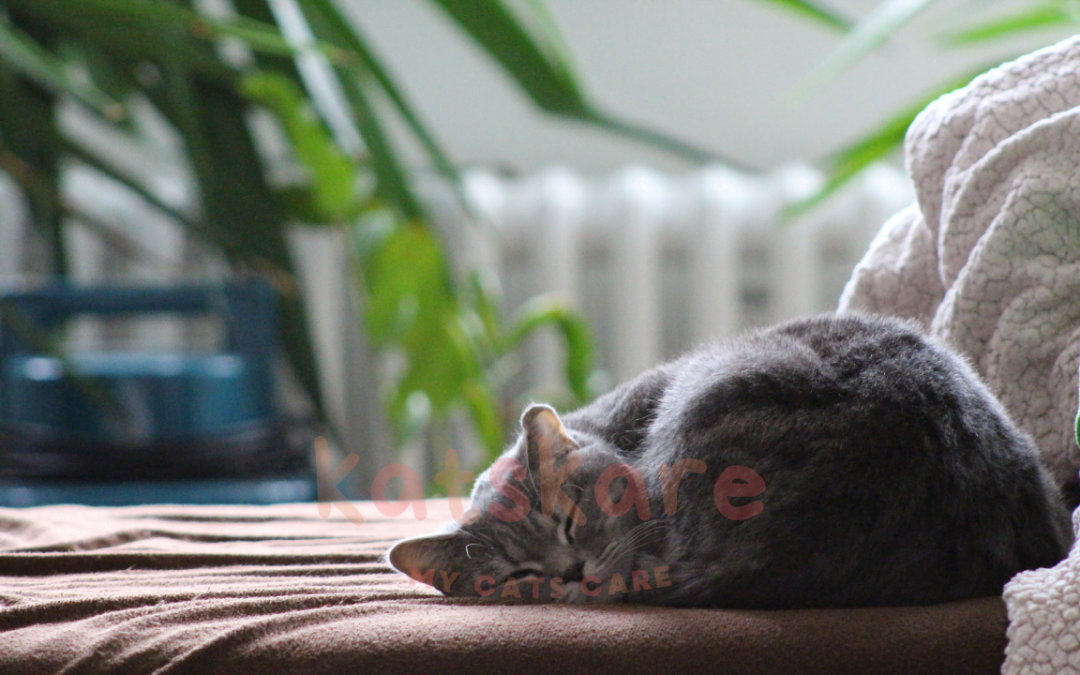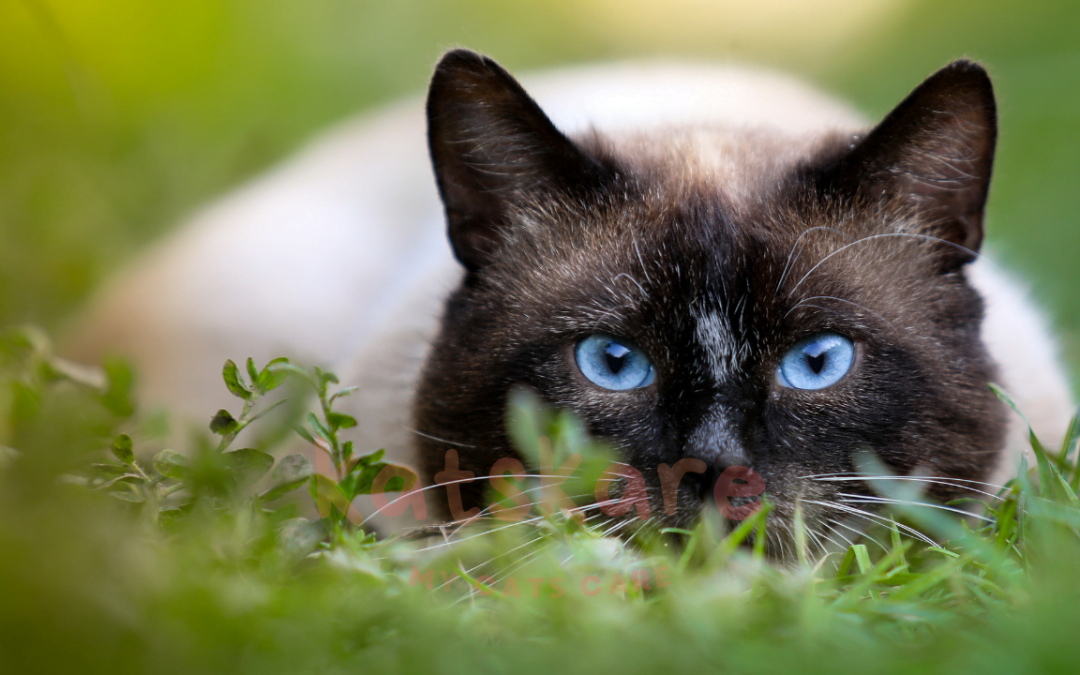
by Muhammed Saeed | Knowledge
Discover the enchanting world of Maine Coon cats, renowned for their impressive size, luxurious fur, and friendly nature. Explore their fascinating history, unique characteristics, care requirements, and why they make exceptional companions in this comprehensive guide.
The Majestic Maine Coon Cat: Unraveling the Charms of North America’s Gentle Giant
The Maine Coon cat, with its impressive size, luxurious fur, and amiable personality, is a breed that commands attention and admiration. Hailing from North America, these gentle giants have captured the hearts of cat enthusiasts worldwide. Known for their striking appearance and friendly nature, Maine Coon cats are often referred to as “the gentle giants” of the feline world. In this comprehensive guide, we will explore the enchanting world of Maine Coon cats, delving into their origins, distinctive characteristics, care needs, and why they make exceptional companions.
1. The Historical Origins of the Maine Coon Cat
The Maine Coon cat’s origins are steeped in legend and mystery. One popular theory suggests that they are descendants of long-haired cats brought to North America by European seafarers, interbreeding with local short-haired cats. Another tale attributes their beginnings to the offspring of Marie Antoinette’s cats, sent to America before the French Revolution. Regardless of their exact origins, Maine Coon cats became well-adapted to the harsh climate of New England and were cherished as skilled hunters and beloved companions.
2. Distinctive Physical Characteristics
Maine Coon cats are distinguished by their impressive size and luxurious fur. Males can weigh between 13 to 18 pounds, with some individuals reaching even higher weights. Females are generally smaller but still substantial in size. Their long, bushy tails, tufted ears, and tufts of fur between their toes add to their distinctive appearance. Maine Coon cats come in a wide range of colors and patterns, from classic tabby to solid and bicolor coats.
3. The Friendly and Sociable Personality
Maine Coon cats are known for their friendly and sociable nature. They are affectionate and enjoy interacting with their human family members, often forming strong bonds with their owners. Maine Coons are not typically aloof like some other cat breeds; instead, they seek companionship and will often follow their human companions around the house.
4. Low-Maintenance Grooming
Despite their long fur, Maine Coon cats have a surprisingly low-maintenance coat. Their fur is water-resistant and sheds less compared to some other long-haired breeds. Regular brushing is still recommended to prevent matting and to keep their coat in good condition. Additionally, as with all cats, regular dental care and nail trimming should be part of their grooming routine.
5. Maine Coon Health Considerations
Maine Coon cats are generally healthy and robust. However, like all breeds, they may be prone to certain health issues, such as hip dysplasia and hypertrophic cardiomyopathy (HCM). Regular veterinary check-ups and a balanced diet are essential to maintain their overall health and well-being. Responsible breeders conduct genetic testing to reduce the risk of hereditary conditions in their breeding lines.
6. The Playful and Intelligent Nature
Maine Coon cats are playful and intelligent creatures, enjoying interactive toys and games. They have a natural hunting instinct and will enthusiastically engage in playtime with their owners. Providing opportunities for mental and physical stimulation is crucial to keep these active and agile cats happy and content.
7. Maine Coons as Adaptable Companions
Maine Coon cats are adaptable to various living environments, making them suitable for both apartment living and spacious homes. They get along well with children and other pets, often forming strong bonds with the entire family. Their friendly and gentle disposition makes them ideal companions for individuals and families seeking a loving and sociable feline friend.
Conclusion
In conclusion, the Maine Coon cat is a majestic and amiable breed that has earned its place as one of the most beloved and popular cat breeds in the world. With their impressive size, luxurious fur, and friendly personality, Maine Coons have a unique charm that captivates all who encounter them. As gentle giants with a playful nature, Maine Coon cats bring joy and warmth to the lives of their human companions. Whether you reside in a bustling city or a serene countryside, the Maine Coon’s adaptability and affectionate nature make them exceptional and treasured companions for a lifetime of companionship and delight.

by Muhammed Saeed | Tips
Training your kitten can be a fun and rewarding experience for both of you. It will help your kitten to become a well behaved and happy pet.
Here are 10 tips on how to train your kitten:
- Establish a Routine: Establishing a regular routine for your kitten will help them to feel secure and safe. Give them set meal times, play times, and nap times. This will help them to know what to expect from you and will help them to adjust better to their new home.
- Make Time to Play: Playing with your kitten gives them mental stimulation and helps them to learn how to interact with you. It also helps to build a strong bond between the two of you. Offer them toys to play with and interactive games such as fetch or hide and seek.
- Use Positive Reinforcement: Positive reinforcement is the best way to train your kitten. When they do something you like, reward them with a treat or a special toy. This will teach them that good behavior is rewarded.
- Keep Training Sessions Short: Training sessions should be kept short and sweet. Most kittens have a short attention span, so try to keep the training sessions to no more than 10 minutes.
- Create a Safe Space: Create a safe space for your kitten to explore and play. This should be a room or area that has no potential hazards such as breakable items or things that can be chewed on.
- Give Them Time to Adjust: Adjusting to a new home can be difficult for kittens. Give them time to adjust and explore their new environment. Don’t push them too hard and let them take their time getting used to their new home.
- Use Clicker Training: Clicker training is a great way to train your kitten. This method involves clicking a clicker when your kitten does something that you want them to do. This will help them to understand what behavior you are rewarding.
- Be Patient: Training a kitten can take time and patience. Don’t get frustrated or give up if your kitten isn’t responding to your training. Keep at it and remember to reward them for their successes.
- Use Cat Treats: Cat treats are a great way to reward your kitten for good behavior. Choose treats that are specifically made for cats and avoid giving them human snacks.
- Have Fun: Training your kitten should be fun for both of you. Spend time playing and bonding with your kitten and make sure that they know how much you love them.
Following these tips will help you to train your kitten in no time. With patience and lots of love, your kitten will be a happy and well-behaved pet.

by Muhammed Saeed | Tips
Is Your Cat Comfortable in a New Home? Moving your cat to a new home can be a stressful experience for both you and your pet. Cats are creatures of habit, so any change in their environment can be quite unsettling for them. To ensure your cat feels comfortable and secure in their new home, it’s important to take steps to make the transition as smooth as possible.
Moving to a new home can be stressful for cats. Learn effective tips and strategies to ease your feline friend’s transition, ensuring they feel safe, secure, and comfortable in their new environment in this comprehensive guide.
How to Make Your Cat Comfortable in a New Home: A Guide to a Smooth Transition
Moving to a new home is an exciting yet challenging experience, not just for humans but also for our feline companions. Cats are creatures of habit, and changes in their environment can be stressful for them. However, with the right approach and understanding, you can help your cat adjust to their new home and ensure they feel safe, secure, and comfortable in their new surroundings. In this comprehensive guide, we will provide effective tips and strategies to ease your cat’s transition, making it a smooth and positive experience for both you and your furry friend.
1. Preparation Starts Before the Move
The key to a successful transition for your cat begins before the actual move. Start by creating a safe and comfortable space for your cat in your current home. Set up a designated area with their favorite toys, bedding, and food dishes. Spend time with your cat in this area to create positive associations.
2. Use Familiar Items in the New Home
When you arrive at your new home, try to keep your cat’s belongings and environment as familiar as possible. Place their bed, toys, and food dishes in a quiet and secure room where they can stay during the initial phase of the move. Familiar scents will help them feel more at ease.
3. Gradual Introductions
Allow your cat to explore their new home gradually. Start with one room and let them acclimate to the smells and surroundings before giving them access to the rest of the house. This step-by-step approach will prevent overwhelming your cat and reduce anxiety.
4. Maintaining a Routine
Cats thrive on routine, so try to stick to their regular feeding, playtime, and litter box schedule as much as possible. Consistency will help create a sense of stability and security for your cat during the transition.
5. Providing Hiding Spots
Create hiding spots for your cat in different areas of the new home. Cardboard boxes or cat condos can offer safe spaces where your cat can retreat and observe their new environment from a secure vantage point.
6. Avoiding Major Changes
During the initial weeks in the new home, try to avoid major changes in your cat’s routine or environment. For example, hold off on introducing new pets or rearranging furniture until your cat has settled in comfortably.
7. Using Pheromone Sprays
Synthetic pheromone sprays can help reduce stress and anxiety in cats. These sprays mimic natural feline pheromones, creating a calming effect and promoting a sense of security.
8. Socialization and Attention
Spend quality time with your cat, engaging in play and providing affection. Social interaction will reinforce the bond between you and your cat and help them feel more at ease in their new home.
9. Patience and Observation
Each cat’s adjustment period is unique, and some cats may take longer to feel comfortable in a new environment. Be patient and observe your cat’s behavior for any signs of distress or anxiety. If needed, consult your veterinarian for additional support.
10. Safe Outdoor Exploration
If you plan to let your cat explore the outdoors, do so gradually and under controlled conditions. Allow supervised outdoor access only after your cat has fully adjusted to the new home and is comfortable with their indoor environment.
Conclusion
To make your cat comfortable in a new home can be a challenging time for you and your cat, but with patience, understanding, and a thoughtful approach, you can help them feel safe, secure, and comfortable in their new surroundings.
By providing a familiar environment, maintaining a routine, and offering plenty of love and attention, you can ensure a smooth transition for your beloved feline friend. Remember, each cat is different, so take the time to observe and respond to your cat’s needs throughout the adjustment process. With your care and support, your cat will soon feel right at home in their new abode.

by Muhammed Saeed | Knowledge
Unravel the captivating world of Siamese cats, known for their striking appearance, vocal personality, and rich history. Delve into their origins, unique traits, care requirements, and why they make exceptional companions in this in-depth guide.
The Siamese Cat: A Comprehensive Guide to Their Elegant Charm and Fascinating History
Siamese cats are an iconic and beloved breed with a long and storied history. Known for their striking blue almond-shaped eyes, sleek bodies, and vocal personalities, Siamese cats have captured the hearts of cat lovers worldwide. With a captivating appearance and unique traits, this breed continues to be a popular choice among pet owners. In this comprehensive guide, we will explore the world of Siamese cats, delving into their origins, distinctive characteristics, care needs, and why they make exceptional feline companions.
1. The Ancient Origins of the Siamese Cat
The Siamese cat’s history traces back to ancient Siam, now known as Thailand, where they were revered and adored by royalty and temple monks. These elegant felines were believed to possess sacred and mystical qualities, and they were often kept in temples as cherished companions. The Siamese cat’s regal presence and striking appearance caught the attention of British diplomats in the 19th century, leading to their introduction to Europe and later North America.
2. Distinctive Physical Characteristics
Siamese cats are renowned for their distinctive physical features that set them apart from other breeds. They have sleek, muscular bodies with a graceful, elongated neck and a long, tapering tail. Their most striking feature is their brilliant blue almond-shaped eyes, which exude intelligence and curiosity. Siamese cats have a short, fine coat that comes in a range of color points, where the ears, face, paws, and tail are darker than the rest of the body.
3. A Vocal and Expressive Personality
Siamese cats are well-known for their vocal and communicative nature. They are not shy about expressing their opinions and will use a wide range of vocalizations to communicate with their human companions. Whether it’s a gentle trill or a loud meow, Siamese cats are excellent at getting their point across. This vocal personality adds to their charm and often leads to engaging interactions with their owners.
4. Intelligent and Social Creatures
Siamese cats are highly intelligent and thrive on social interaction. They enjoy being the center of attention and will form strong bonds with their human family members. These cats are not content to be left alone for long periods and prefer homes where they will receive ample companionship and mental stimulation. Playing interactive games and providing puzzle toys can help keep their sharp minds engaged.
5. Low-Maintenance Grooming
The Siamese cat’s short coat requires minimal grooming compared to long-haired breeds. A weekly brushing session is typically sufficient to keep their fur in good condition and reduce shedding. Additionally, regular dental care and nail trimming are essential aspects of their grooming routine, as with all cats.
6. Siamese Health Considerations
Like all breeds, Siamese cats are prone to certain health issues, including dental problems, respiratory conditions, and certain genetic disorders. It is crucial to schedule regular veterinary check-ups and provide a balanced diet to maintain their overall well-being. Responsible breeders conduct genetic testing to reduce the risk of passing on hereditary conditions to their offspring.
7. The Wide Range of Siamese Colors and Patterns
Siamese cats come in a variety of color points, including seal, blue, chocolate, lilac, red, and cream. Each color point has its unique appeal and charm. The points can be distributed in different patterns, such as colorpoint, which has darker points and a lighter body, and lynx point, where the points have distinctive tabby striping. These variations add to the visual allure of the Siamese breed.
8. The Siamese Cat as a Loyal Companion
Siamese cats form strong bonds with their human families and are known for their loyalty. They are attentive and affectionate, enjoying cuddling and spending time with their owners. Their engaging personalities and active nature make them ideal companions for individuals and families who can provide them with the love and attention they crave.
Conclusion
In conclusion, the Siamese cat’s elegance, striking appearance, and engaging personality have made them a cherished and iconic breed for centuries. Their history as revered and adored companions in ancient Siam continues to shine through in their regal presence and loving nature. As intelligent and social creatures, Siamese cats thrive on interaction and form deep bonds with their human families. With their low-maintenance grooming needs and vocal personalities, Siamese cats are a delightful addition to any home that can provide them with the love, attention, and mental stimulation they deserve.

by Muhammed Saeed | Fun Games
Unleash your creativity and delight your feline with DIY cats toys and treats. Discover easy and fun ideas to keep your furry companion entertained, mentally stimulated, and rewarded with wholesome homemade goodies in this informative guide.
DIY Cats Toys and Treats: Engaging and Healthy Ideas for Your Feline Friend
As a cat owner, you know how important it is to keep your feline friend entertained, mentally stimulated, and nourished with wholesome treats. Making your own cat toys and treats can be a rewarding and enjoyable experience, allowing you to unleash your creativity while providing your cat with personalized and budget-friendly delights. In this comprehensive guide, we will share easy and fun DIY ideas for cat toys and treats that will keep your furry companion happily engaged and satisfied.
1. DIY Cats Toys: Engaging Fun for Your Feline
a. Feather Wand Toy: Attach feathers to a string or stick to create an interactive wand toy. Your cat will love pouncing and chasing the feathers, providing valuable exercise and mental stimulation.
b. Cardboard Box Castle: Transform a cardboard box into a fun castle for your cat. Cut holes for doorways and windows, and add blankets or cushions for cozy spots. Cats adore exploring and hiding in their cardboard kingdom.
c. Treat Puzzle Box: Create a treat puzzle box by cutting holes in a small cardboard box and placing treats inside. Your cat will enjoy the challenge of figuring out how to retrieve the goodies.
d. Catnip Sock Toy: Fill a sock with catnip and tie it securely. This simple toy will release the enticing scent of catnip, offering your cat endless delight.
2. Wholesome DIY Cats Treats: Healthy Rewards for Your Perfect Pal
a. Tuna Treats: Mix canned tuna with flour, egg, and a bit of water to create a dough. Roll the dough into small balls and bake them until they are firm. These tuna treats will have your cat begging for more.
b. Chicken Jerky: Slice cooked chicken into thin strips and bake them until they become jerky-like. These tasty chicken jerky treats are high in protein and a favorite among many cats.
c. Salmon Catnip Biscuits: Combine canned salmon with catnip, flour, and a little water to form a dough. Roll it out and cut it into small biscuit shapes. Bake until they are golden brown, and watch your cat go crazy for these delightful treats.
d. Sweet Potato Chewies: Slice sweet potatoes into thin rounds and bake them until they are crispy. These chewy treats are not only delicious but also provide added nutritional benefits.
3. Safety Tips for DIY Cats Toys and Treats
a. Always supervise your cat when they are playing with DIY toys to ensure they do not ingest any small parts.
b. Choose non-toxic materials for all DIY projects to keep your cat safe.
c. Consult your veterinarian before introducing new treats into your cat’s diet, especially if they have any dietary restrictions or health concerns.
d. Monitor your cat’s reaction to new treats to ensure they are well-tolerated.
4. Rotating Toys and Treats for Ongoing Enjoyment
To keep things fresh and exciting for your cat, rotate the toys and treats you offer. Store some toys out of sight and reintroduce them after a while to pique your cat’s interest. Similarly, alternate between different types of treats to keep your cat eager for the next delightful surprise.
Conclusion
DIY cat toys and treats are not only a great way to engage your cat’s natural instincts and curiosity but also a wonderful opportunity to bond with your feline friend. With simple materials and a little creativity, you can craft toys that entertain and enrich your cat’s life. Moreover, preparing homemade treats allows you to offer wholesome and nutritious rewards. Always prioritize your cat’s safety and dietary needs, and enjoy the joyous moments of play and treat time with your beloved furry companion.





